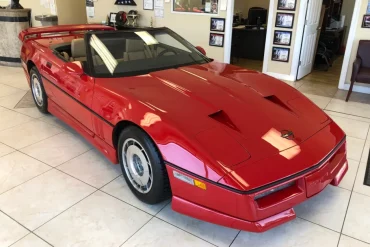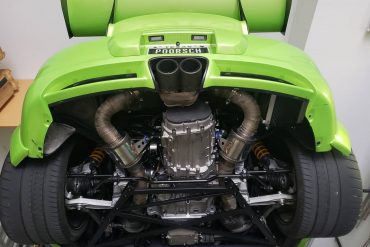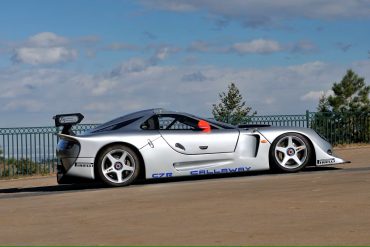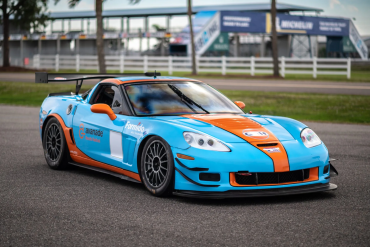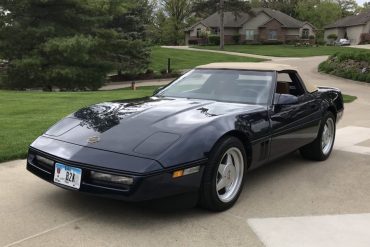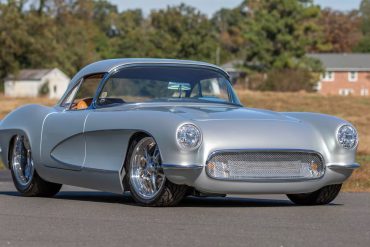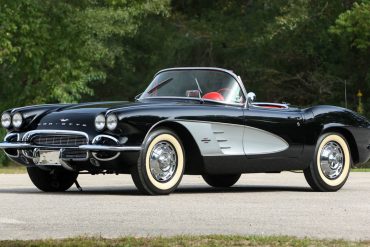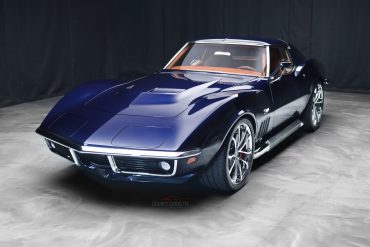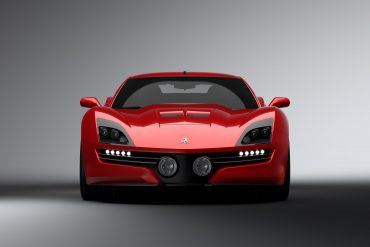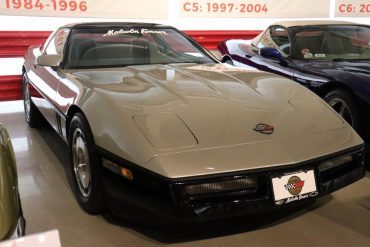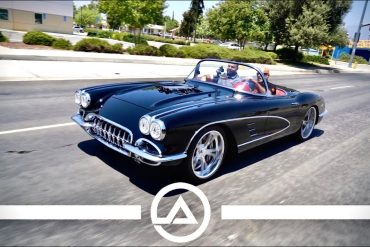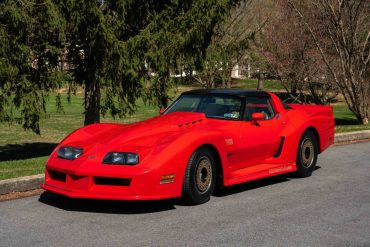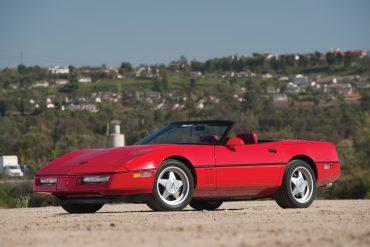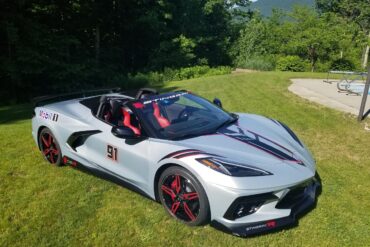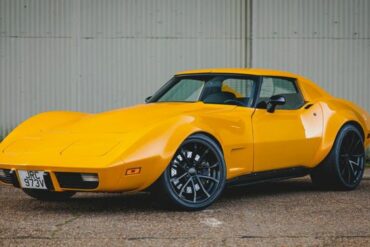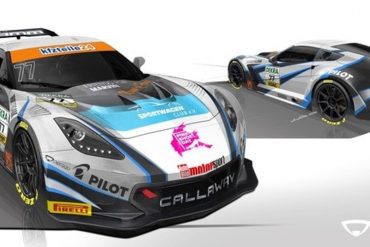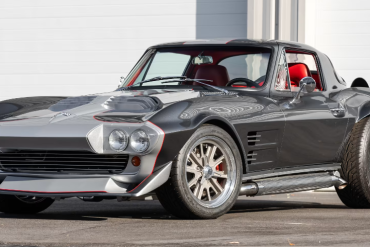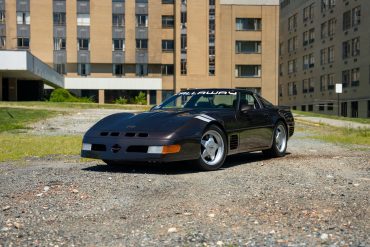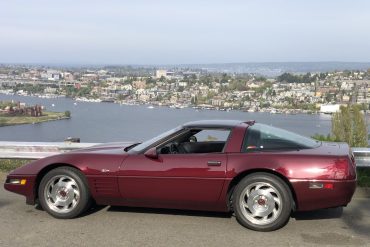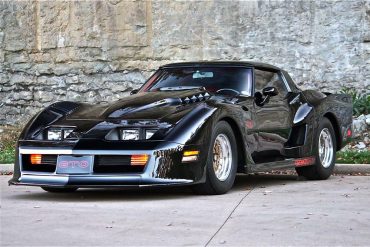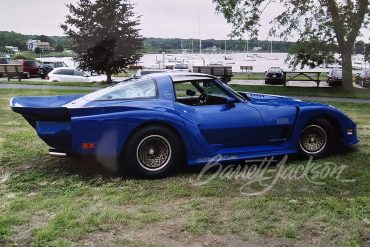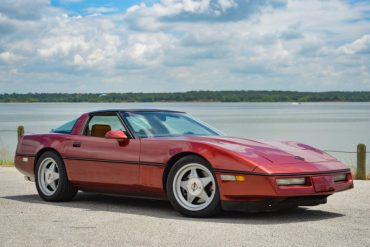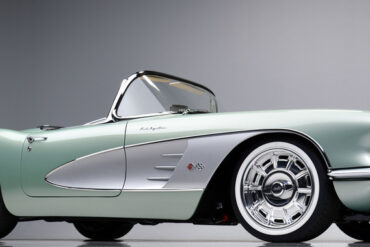Offered from 1987 to 1991, the RPO-B2K upgrade was available from any Chevrolet dealer and also Callaway’s first major Corvette tuning program. Together, GM and Callaway made the upgrade package a Regular Production Order (RPO) which was the first time GM had outsourced such an option to a specialist manufacturer. It even had a factory back warranty. As the C4 updated, so did Callway’s program and by 1988, the B2K was pushing 382 bhp and 562 ft. lbs. of torque.
Check out this LS Powered Porsche Cayman! The Debate Is Over – How Do You Make A Porsche Faster? Stick...
In August 19, 2007, Callaway Cars unveiled the C16 Speedster, the third and flagship model in the C16 lineup, on...
In 1997, Reeves Callaway introduced the Callaway C7R GT1, a thoroughbred racing machine constructed with a full monocoque chassis. It...
Chevrolet's introduction of the LT1 in 1992 as the base engine in the Corvette phased out the L98 based Callaway Twin Turbo. Previously, Callaway Corvettes made their increased power through positive manifold pressure; now they made it through increased displacement and finesse. Initially called the CL1 or CR1, they designated the chassis they were built upon. They were based on the pushrod LT1 cars (CL1) or the 32 valve DOHC LT5 ZR-1 cars (CR1).
This 2009 coupe is reportedly 1 of 5 Corvettes built by Chevrolet exclusively for track use by Callaway Competition. All...
FOR SALE: A 1988 Callaway Twin-Turbo Corvette Convertible We are pleased to present this 1988 Corvette Convertible. Our friends at...
This custom 1962 Chevrolet Corvette was built by American Street Rods in Gainesville, Virginia and represents an exceptional custom build...
First off, I’m sorry for the obvious “knock-out” pun, and I promise that for the rest of this piece, I...
Welcome to a new series where I showcase cool Corvette Restomods from around the net. In the relatively short time...
An Homage to the American Sports Car If you’ve never heard of the U.S.-based firm Equus, you are probably not...
After a yearlong hiatus leading to a non-existent 1983 production run, the completely redeveloped fourth-generation Corvette emerged onto the scene...
In the realm of automotive restoration, few names evoke the same level of admiration and respect as Gabe’s Custom Interiors...
Renowned for its presence in global racing during the 1970s and 1980s, John Greenwood’s team also produced daring IMSA-style street...
Callaway Competition is the German arm of Callaway Cars Inc., an American specialty vehicle manufacturer and engineering company headquartered in...
Offered from 1987 to 1991, the RPO-B2K upgrade was available from any Chevrolet dealer and also Callaway’s first major Corvette...
When it was first revealed, it is well known that the Corvette C8’s styling was a radical departure from previous...
Genovation’s Street Legal 800HP GXE Electric Corvette Arrives at the LA Auto Show In December, 2017, Corvsport.com published an article...
FOR SALE: A Stunning 1976 Corvette Restomod One of the biggest criticisms repeatedly slung at mid-seventies Corvette is this: they...
A New Look for the Car’s 13th Year Callaway Competition will run its Corvette C7 GT3-R in this year’s ADAC GT...
This is a 2007 Chevrolet Corvette Z06 that has been upgraded with a Callaway SC652 package, which includes various high-performance...
CorvSport reviewed every single Corvette of the 527 offered by Mecum at this year’s extravaganza in Kissimmee, Florida, and we...
The Hennessey Supercharged H700 Corvette C8 Stingray offers exotic power and torque levels, even outperforming the 2023 Chevrolet Corvette Z06....
This Callaway-tuned C4 Corvette boasts a 350ci (5.7-liter) V8 engine that has been twin-turbocharged and is capable of producing 390hp...
Few accessories accentuate the C4 Corvette’s natural appeal quite like an attractive set of custom rims. In fact, one’s eye...
Callaway and Corvettes Belong Together You’ll be hard-pressed to find something that goes together as well as the tuning outfit...
The major differences between the 1980 and 1982 Daytona and the 1981 GTO are the hood, the tops of the rear fenders, and the rear spoiler/bumper cover. The Daytona had an elaborate, short vertical fin on top of the rear fender that turned several turns “in and back,” flowing to the wide, long, table-like rear spoiler. The GTO’s rear fenders pontoons are the same as.
If you happened to see this 1981 Greenwood Daytona Turbo out in the wild, at first glance, you might shrug...
This Callaway Corvette Could Be Yours By the End of the Week! Our friends at Bringatrailer.com frequently post some truly...
It’s no secret that Kevin Hart loves his classics and this was made even more clear when he dropped $825,000...


